Designing the Phase expansion
Hey there Mages!
Here we are with the last talk about our upcoming expansions, tackling the last, but not least of our elements. Today we’ll mess up our opponent’s head in the most convoluted way. Today we talk about phase shift.
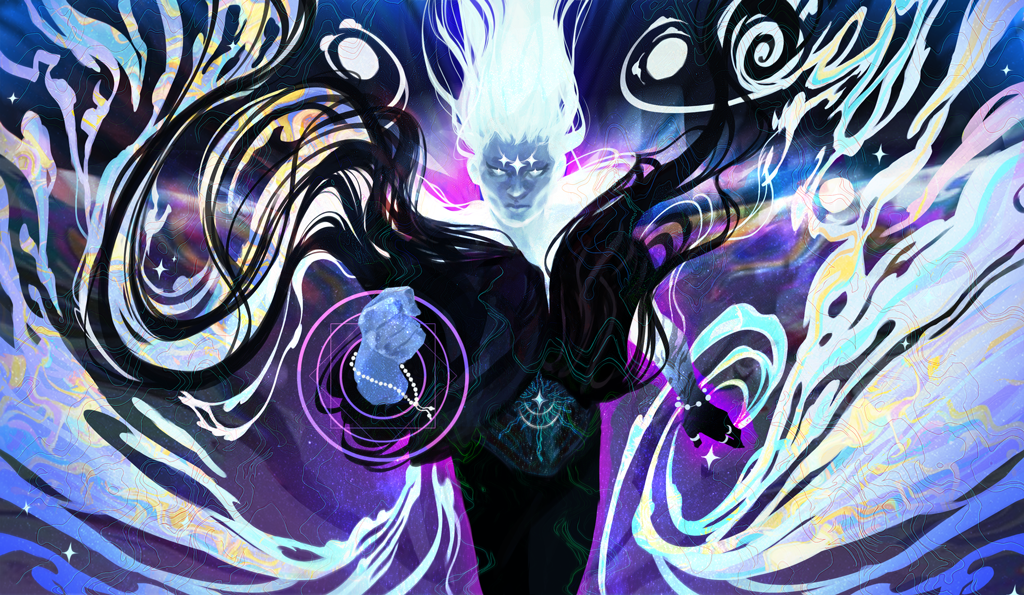
Millennium by Jeffrey Jeanson
What is Phase?
This game design talk will start with a mandatory explanation of some concepts.
Phase is the short term we use to talk about phase shifting. In terms of storytelling, the general idea you should keep in mind when thinking of phase shift is “Desynchronizing someone from themself”. It’s kind of like destroying their thoughts in the future.
The other concept you need to know about is what’s commonly called “Milling” in card games.
Milling is the act of discarding the opponent’s deck before they even get to play it.
Now that you have a vague idea of what these two concepts are, we’re good to go.
Why going for phase?
We did not define “Milling” for no reason. In terms of mechanics, Phase shifting someone in Mage Noir, is the name we gave to milling. You discard cards from their deck until they have none left. Allowing you to win the game because they draw from an empty deck.
If you ask card game players what they think of milling, it is quite a controversial strategy. Some players love it, others hate it. Constantin (aka Khnil) for instance, loves it. It is a fun yet weird playstyle that puts a classic twist on the card game genre. So it was only logical for him to push for the creation of Phase shifting (and absolutely not because he’s a fanatic maniac).
This is not the only reason why we decided to go for this mechanic though. With the creation of a play style that relies on filling up the discard piles of players, we also need to create cards that would counter it. Meaning that with Phase shift cards would come spells that can remove cards from the discard pile.
Arcane until there with the “Way of the Time Bender” expansion was already an element that could get really strong with a full discard, and perhaps the game lacked a tiny bit of answers to that type of strategy. By including Phase shifting to the game, we could kill two birds with one stone.
- First, providing the element with a fun new strategy that would pair very well with its already existing identity.
- Second, implementing key cards that would bring more tools for players to interact with this strategy and keep it in check.
The Burden of Future Knowledge
The Phase expansion centers around the discovery of Phase Shift. Upon uncovering Arcane magic, which allows to manipulate space and time at their core, Leonardo Da Vinci chose to experiment with it, and it came with the ability to shift phase. This allowed him to impede potentially dangerous individuals, revealing the truth about their ultimate intentions. He also applied it to himself to gain a deeper understanding of the future.
The knowledge he acquired through this method proved undeniably useful. However, it also felt ethically questionable, akin to learning something one shouldn’t know. Da Vinci comprehended that Phase Shifting could either drive its targets insane or elevate someone mentally resilient to a level of knowledge and power that no individual should attain.
Today, phase shifting is still one of the most dangerous ways to manipulate Arcane, leading The Circle to watch closely the few Mage Noir who are capable of such mastery of Time.
So what is Phase shift all about?
Phase shift revolves around these 3 concepts:
- Deceiving
- Inventive
- Weird
Fortunately, the innate nature of the “destroy your opponent’s deck until they have nothing left to play” already works for all 3 of these concepts, so we had a head start.
What we did with Phase shift.
Having an already existing playstyle that would fit our objectives by nature was a great opportunity to make them stand out even more with some smart ideas.
The first concept we tackled was “Deceiving”, because it would allow us to answer one of the challenging parts of designing the Phase shift archetype.
As we said earlier, some players hate getting milled. Mainly because getting their card removed from their grasp before they can even play them frustrates them, which is fairly understandable. What we did to counter this feeling is quite simple. We decided to discard from the bottom of the deck.
This lowers frustration as players know that they probably wouldn’t have drawn that card anyway.
An added bonus is that it gives a very strong sense of flavor, as you can feel like you’re attacking your opponent’s future actions and thoughts, rather than the opponent themselves.
It’s something that was already introduced previously with Way of the Time Bender expansion: your deck is your future, your discard pile is your past. More exactly, they are respectively your future possible thoughts, and your past actions.
Since their game plan and their Health points were not altered, players feel like nothing happened to them… Until they have only a few cards left in their deck and realize they’re in trouble. Thus, this decision allowed us to fulfill multiple objectives.
- Keeping the archetype intact
- Lowering frustration
- Making the expansion devilishly deceiving
The second key concept was “Inventive”. Like we told earlier, creating counter cards to the archetype was part of the reasons why we went for it. Since we created some strong counters to Phase shift, players would also need to find alternative ways to beat the opponent, even if they have a perfect answer to their initial game plan.
Cards like the Rite of Phase and Temporal brambles were created with this purpose in mind.
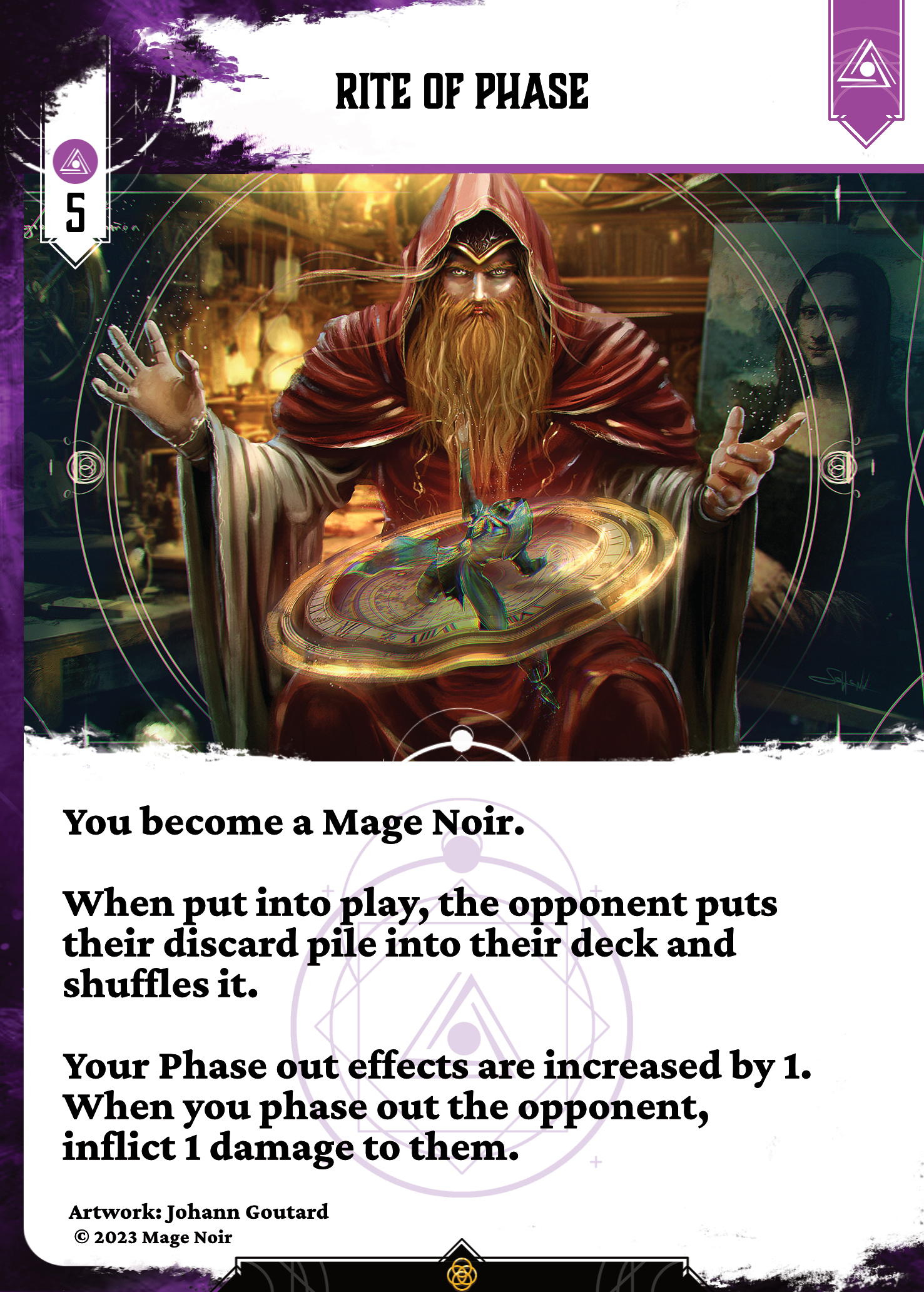
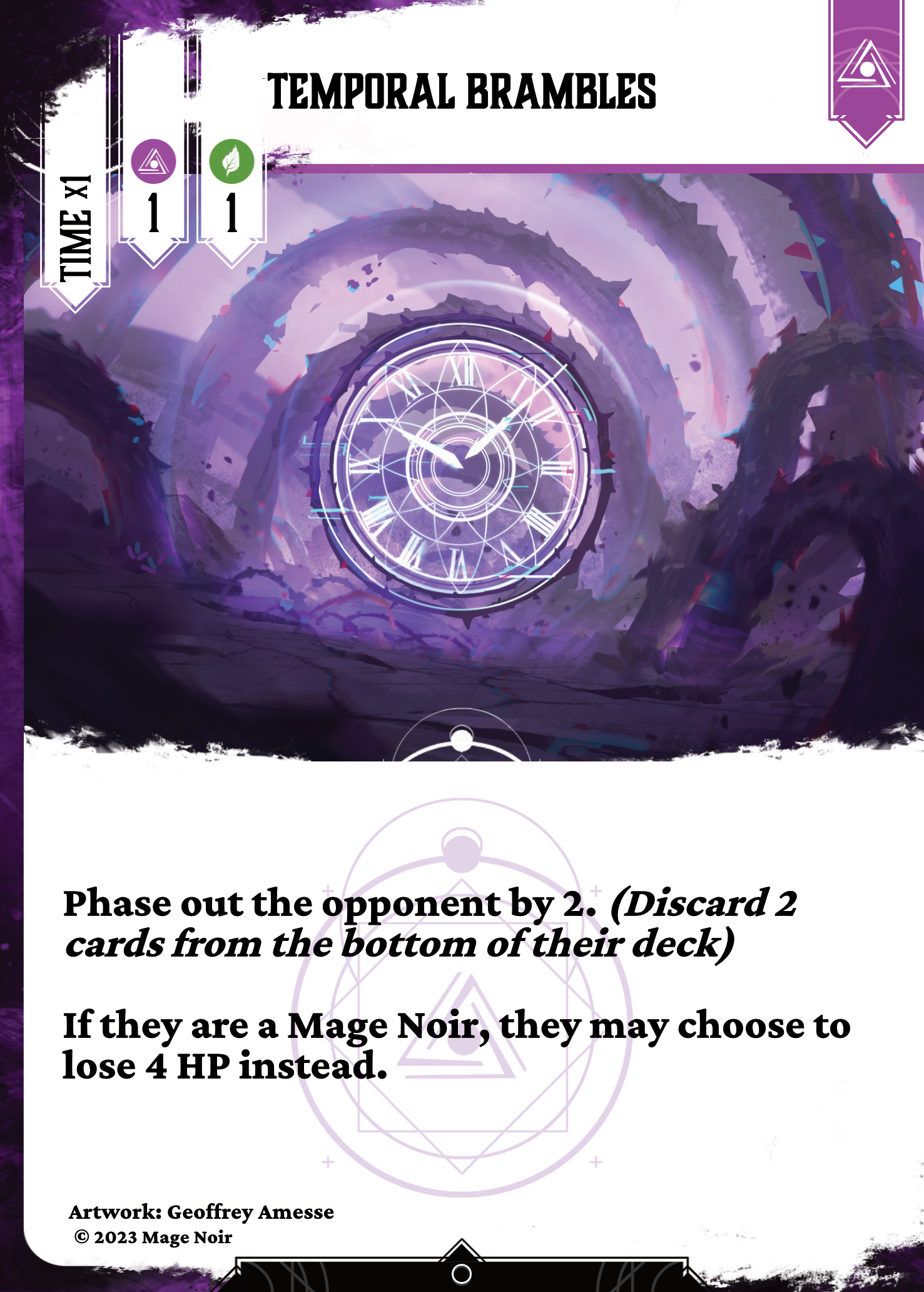
Rite of phase was created to make the Phase shift player rethink their entire game plan by focusing on damages for instance. Or giving them the choice to power through and double down on the discard strategy.
Temporal brambles was designed to put the opponent before decisions that would seem obvious at first before making them regret their choice soon after.
These cards, but also the way the Phase shift archetype can be paired up with the original Arcane expansion creates a lot of ways for players to adapt and change strategy while deceiving the opponent on their real intent.
Last but not least, Phase shift had to be unusual. The good thing is that at Double Combo Games, we like weird cards that make no sense.
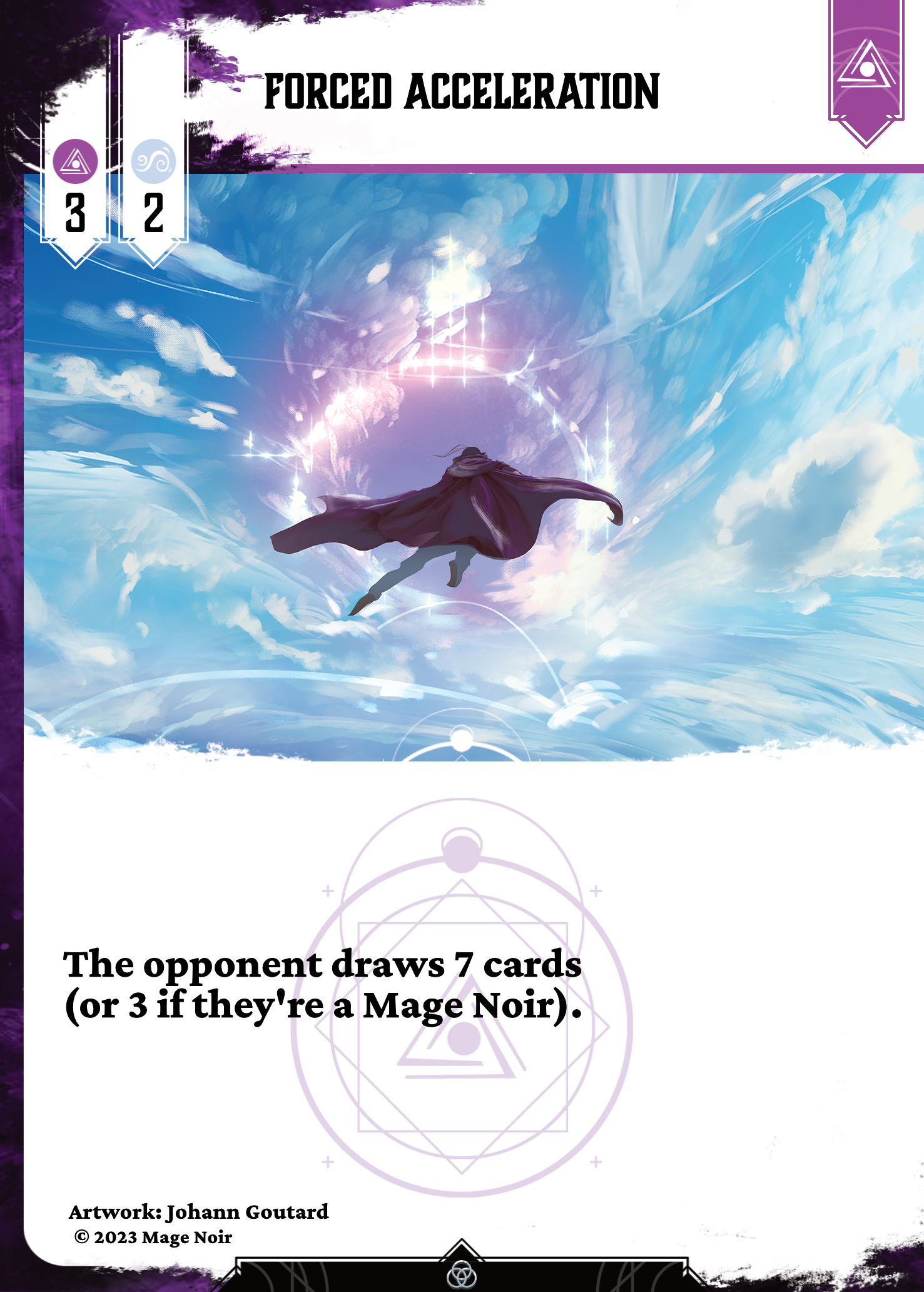
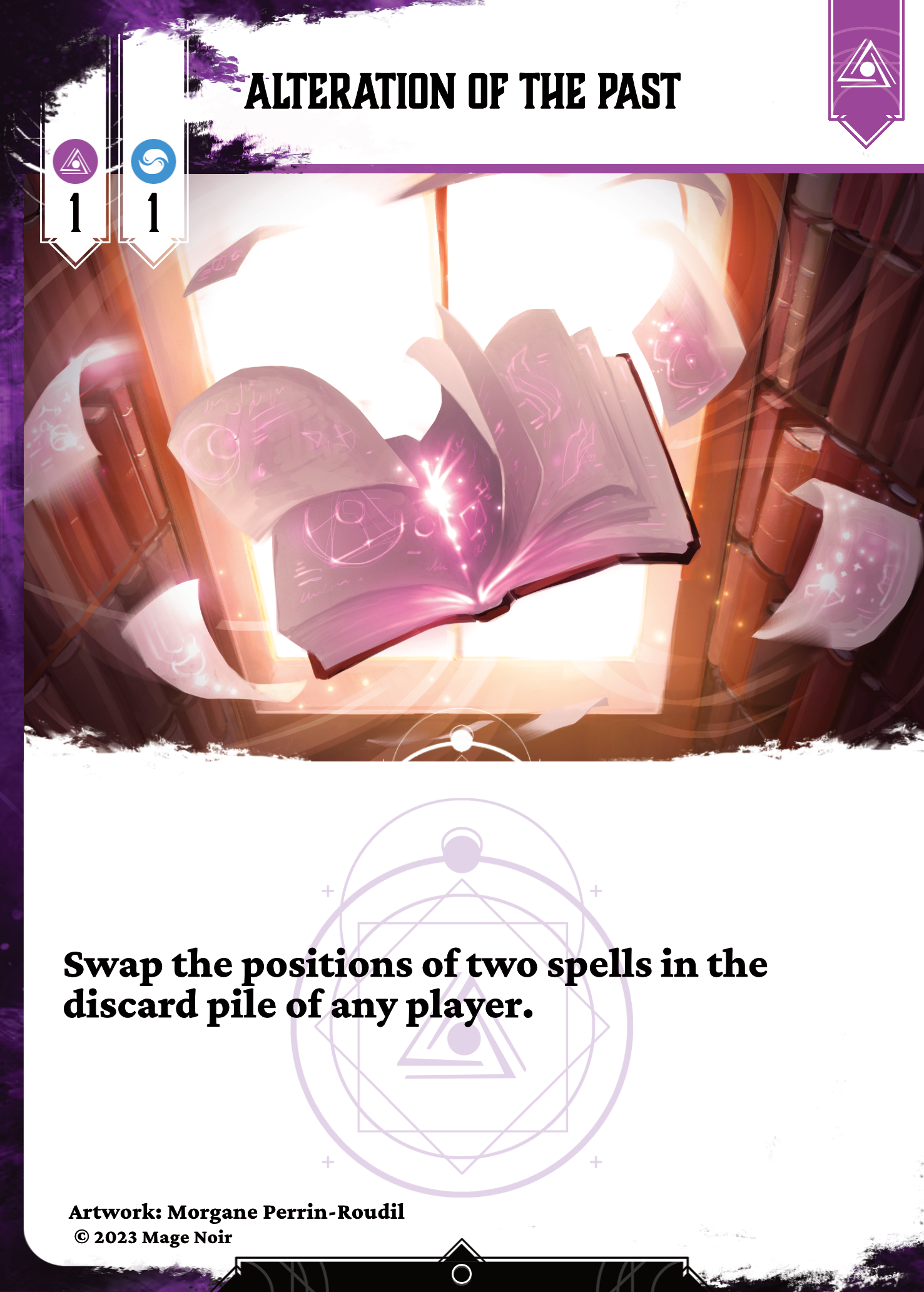
What could these possibly be used for? No we won’t tell you, that would completely miss the point.
Getting your time back
Despite its quite versatile playstyle and weird convoluted way to attack, some simple cards can easily counter the Phase shift archetype.
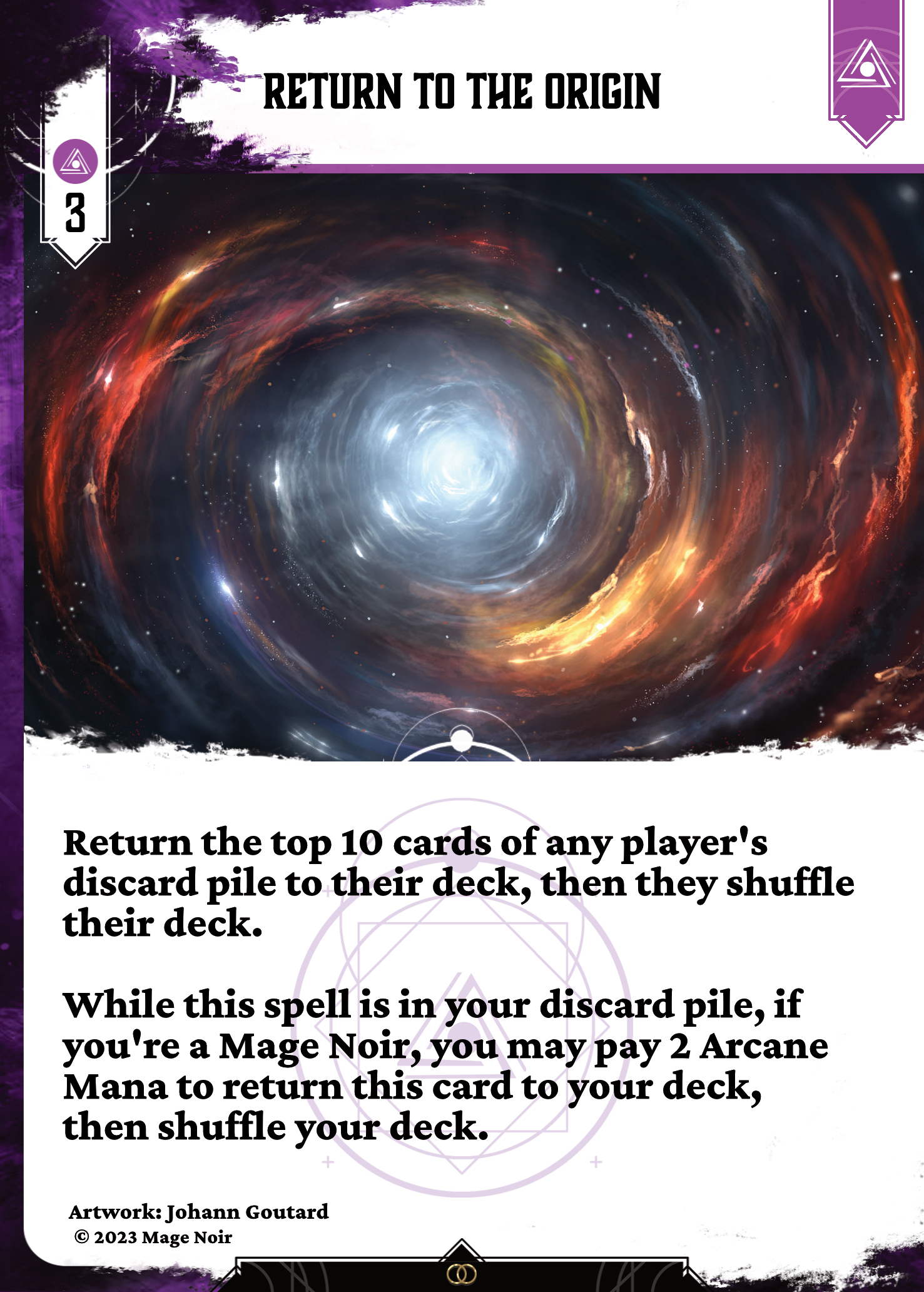
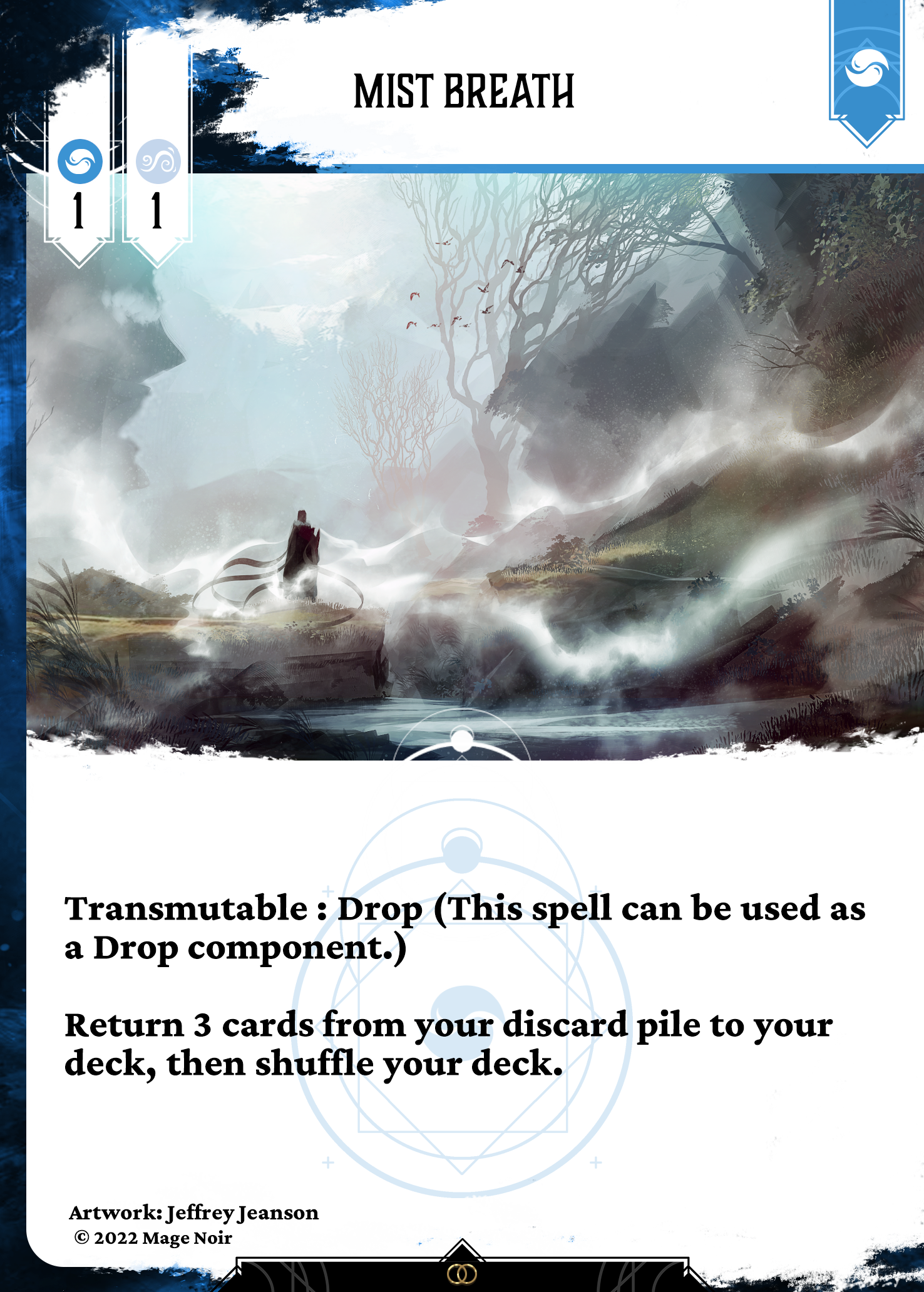
Anything that allows you to fill your deck back can do wonders to stop it and they’ll need to adapt if they want to win the game at some point. While they have a few ways to hit your health points, these are slow and not incredibly efficient. Giving you plenty of time to counterattack and kill them before they wipe your thoughts clean.
That’s it for today Mages!
Working on the Phase shift archetype was very interesting as it allowed us to bring a mischievous twist on a controversial card game archetype. We hope this was for the better and that you’ll love playing with it.
Now that we’ve talked about all 6 of our new expansions, we hope this gave you a better understanding of our thought process when creating cards and making them work with each other. Now you’ll simply have to wait for their release before you try them out.
Until then, take care of yourselves Mages, and have fun!
~ Everyone at Double Combo Games